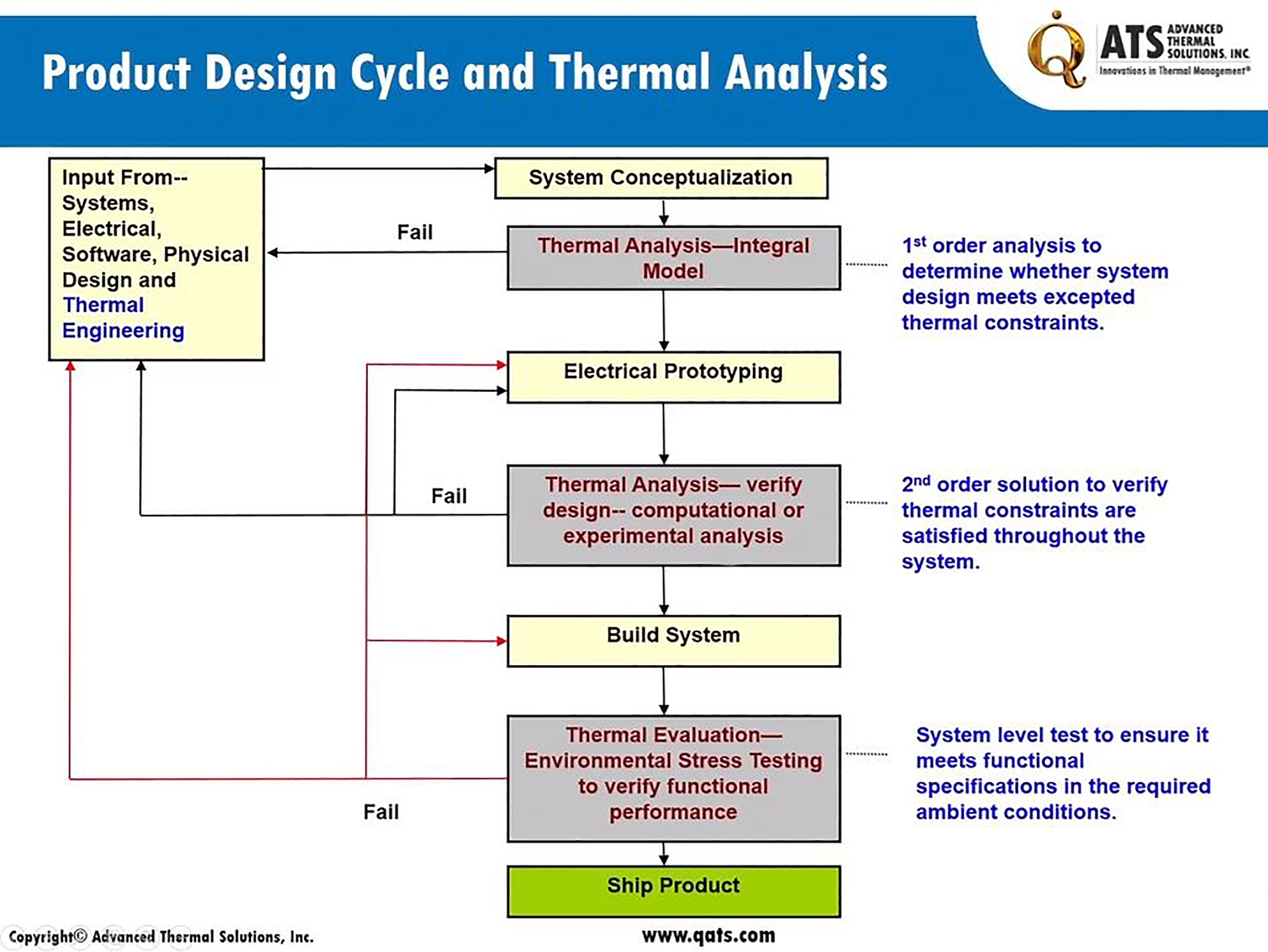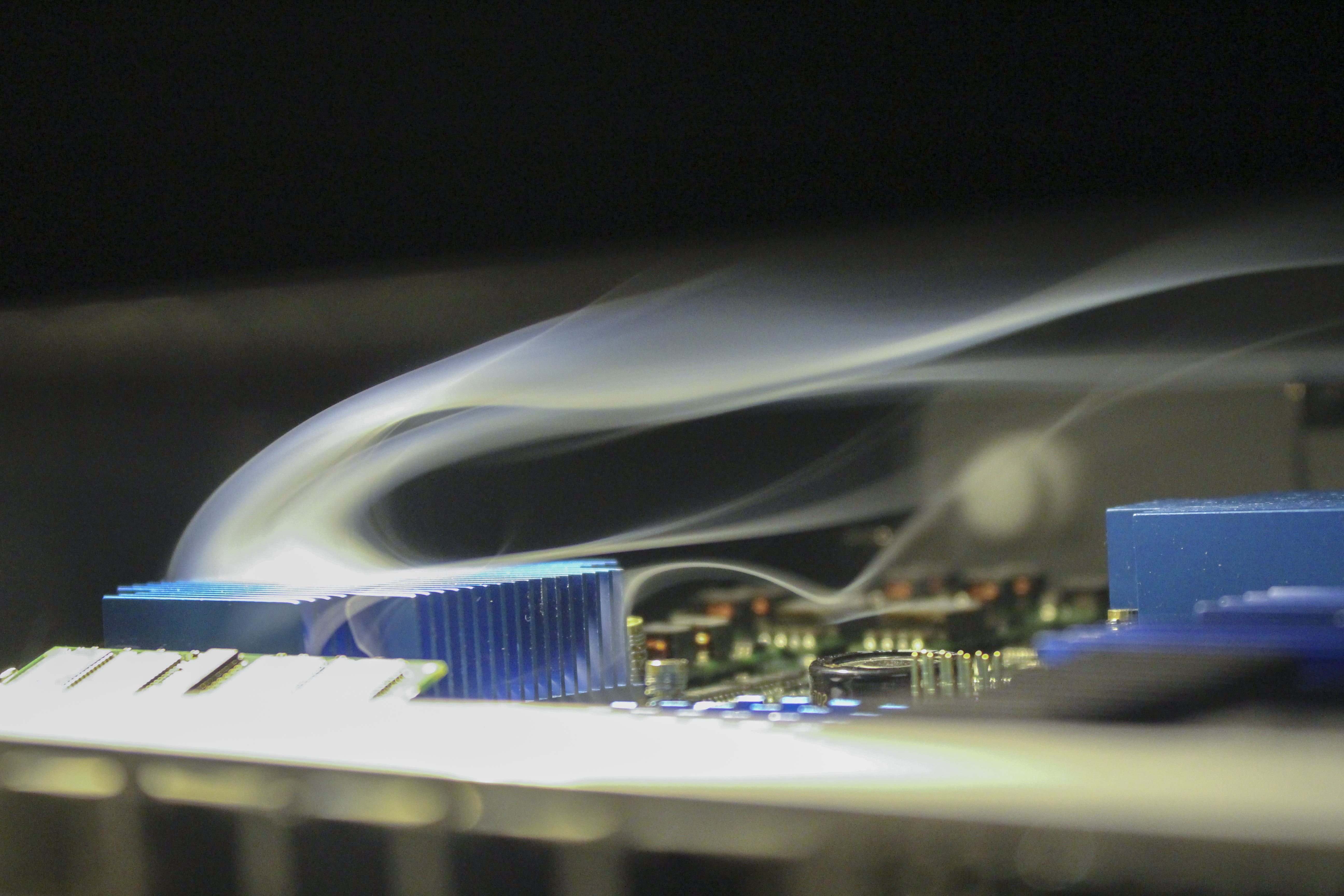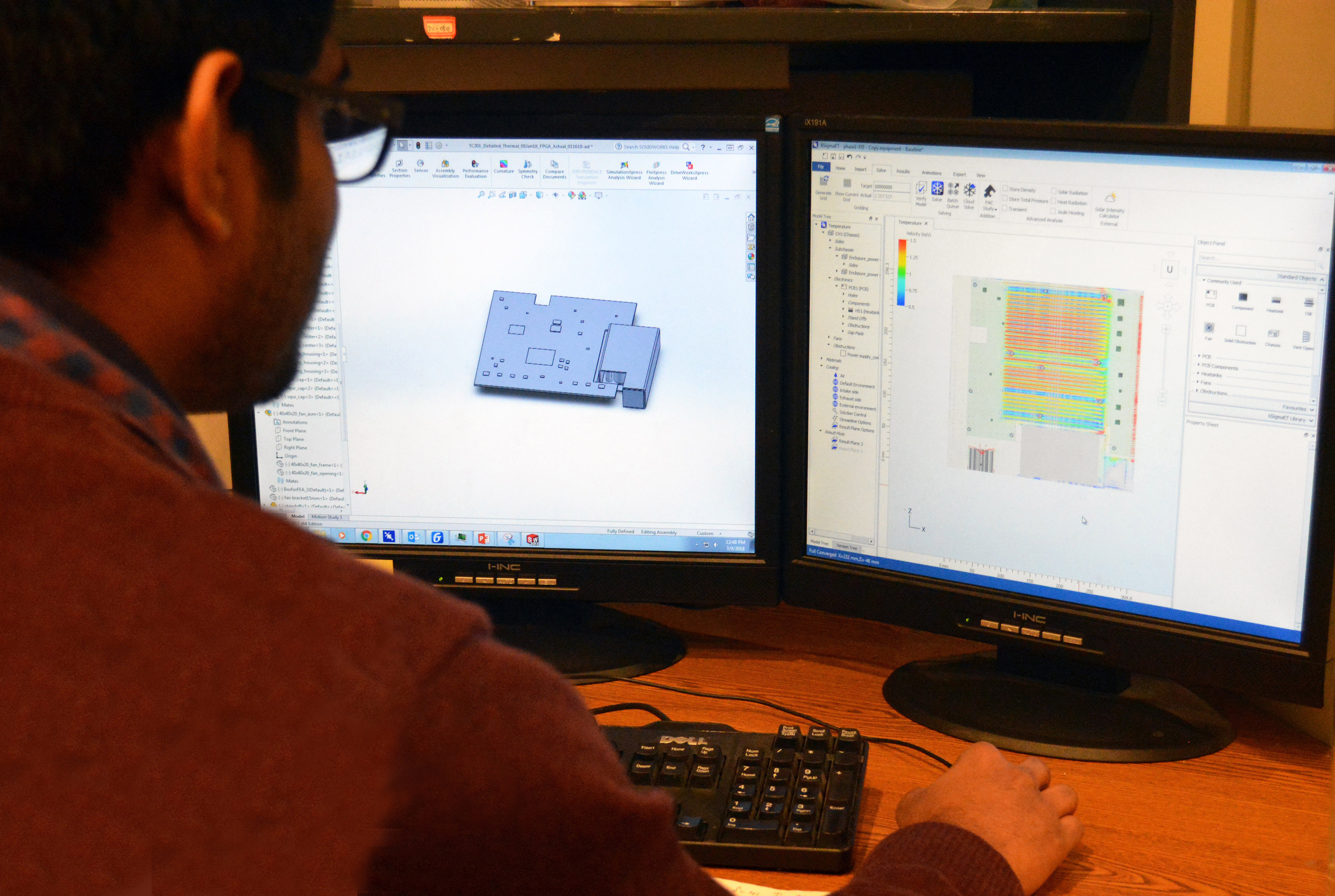BY JOSH PERRY
Marketing Communications Specialist, Advanced Thermal Solutions, Inc. (ATS)
www.qats.com
Thermal management is a critical component of the design phase for any electronics product. Incorporating thermal management early in the process will lead to a more cost-effective and reliable product and maximize mean time between failures (MTBFs). This is true regardless of the application, whether it is a laptop, a telecommunications chassis, a smartphone, or a data center packed with servers.
Heat is a menace for electronics, irrespective of the market sector. It doesn’t matter what the final product is, heat must be managed to ensure proper performance. So where do engineers begin designing a thermal solution? How do they optimize the process to ensure that heat will not erase the time and money that is invested in the design of a new product?
To avoid costly trial and error in the design phase, thermal management needs to begin in the architecture stage of the design and be incorporated throughout product development. Testing a product under real-world conditions to see how it holds up under the heat allows engineers to alter the design before it goes to market and gives designers the opportunity to make the changes necessary to safeguard functional integrity and operational reliability.

Designers can avoid catastrophic failures and produce a highly reliable product by incorporating thermal management early in the design process.
One rule of thumb for engineers to follow is that successful thermal management is solely focused on the junction (or operating) temperature of the device. It is the hottest point on the device that needs to be managed. A successful thermal design will keep the junction temperatures of all critical devices in a system below their worst-case ambient temperature. Excessive heat will result in data transmission errors and decrease the system’s life expectancy. This is complicated by the complexities of design from material properties to packaging issues and manufacturing processes.
Temperature distribution and air distribution in any electronic system is temporal and spatial. Even between cards in a telecom chassis, you will see a significant temperature gradient from the top to the bottom. It is important to remember that when heat is generated, it goes in every direction, including into the board that the device is sitting on. Because heat is going in every direction, air management must also be considered. Heat will be carried by the airflow to other devices, which will impact their junction temperatures.

A smoke flow visualization test shows airflow over a heat sink in a wind tunnel.
This indicates that thermal management does not exist only at the device level. In fact, modeling thermal issues should start with the environment in which the system resides before moving to the cabinet where the electronics are housed to the board to the component (chip housing) and then to the chip. The nature of electronics packaging means that the boundary conditions of the system will affect the chip.
Heat starts with the chip
Ultimately, it is the junction temperature of the chip that will be the primary concern of the final thermal design, whether it is in an IGBT or power device, CPU, GPU, or any other component that produces the required functionality. Like any complete electronics system, it is difficult to manage the heat at chip level because it also has different power distributions and hotspots.
Heat dissipated from the chip is conducted through the component package and eventually is transferred through convection and radiation to the external environment. It is a highly three-dimensional heat transfer process.
While thermal and mechanical engineers are typically the last link in product design and are typically brought into the design process at the later stages, it is important to not settle for “like solutions.” Just because a solution worked for one design does not guarantee its success with another device or system. Product designs and thermal solutions are as different as the engineers who made them. The materials used in the packaging are different, the manufacturing process is different, the environment in which the chip is located is different, and all have a significant impact on the required thermal design.
The data is not transferable, but the process for determining a solution is. If you can understand the solution path without focusing on the specific data, then you can take that path and apply it to your challenge. Do not assume that a given answer to a problem is a universally applicable solution.
Steps for a successful thermal design
The first step to optimizing thermal management for your design is to establish the specific thermal operating requirements; for example, a junction temperature of 100°C to give a ground zero that you can design toward. Performing thermal evaluation in all phases of the design cycle will also ensure that any issues will be caught early on and will not require a system-level teardown that will cost an entire product (and possibly a few jobs). This process is the same whether you are integrating air or liquid cooling.

ATS engineers incorporate CFD simulations with analytical modeling to design optimized thermal solutions.
Employ a system-level approach, aiming for two independent solutions starting with integral/analytical modeling. Do not rely solely on computational modeling or computational fluid dynamics (CFD) simulations. Analytical modeling, putting pen to paper to calculate pressure, temperature, or air velocity with standard equations, will provide a first-order solution and a reference point for computer simulations.
CFD will always provide a solution, but without a reference point from analytical modeling, it is impossible to know whether it is a correct answer or not. The last step is empirical or experimental modeling, which consists of testing under real-world conditions in a lab setting.
When exploring a thermal solution, start from the system-level and work back to the chip. Always use the maximum possible power when calculating junction temperature.
At the system level, keep in mind the location and environment of the system and adjacent systems. Is it going to be indoors or outdoors? Is it going to be in a desert or in an area that will receive a lot of precipitation? Other potential design constraints include aesthetics. If the system is an outdoor box that must be painted black, the additional external heat from the sun needs to be part of the thermal design. Air filters, vents, and openings are other considerations at that level.
At the card-rack level, card spacing, EMI shielding, and shelf material can all impact thermal performance. Also, how much space is available for the free passage of air, and how will airflow from other cards affect the heat on this card? How is the card attached to the frame, and can the enclosure act as a heat sink?
At the board level, materials and their thermal conductivity are important to understanding how effective heat transfer will be. In addition, consider local metallization on the board and how the components/devices are laid out on the printed circuit board.
At the chip level or component level, designers need to factor in the package type and materials, power dissipation fluctuations, power dissipation from adjacent components, spacing between components, and the thermal resistance of critical components.
Conclusion
The roadmap to a successful thermal design begins by defining the problem. Start with analytical modeling to create a first-order solution before turning to computer simulations and then compare the answers to make sure that they are within a specified tolerance.
Avoid catastrophic failures and produce a highly reliable product by incorporating thermal management early in the design process. Effective thermal management of electronics is the key to a fail-safe operation.
Advertisement
Learn more about Advanced Thermal Solutions





